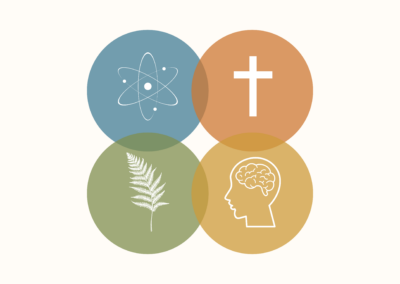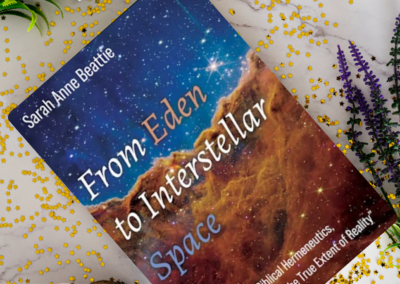
Christmas Eve Reflection
December 24th 2024|Nicola Hoggard Creegan
As I attended the beautiful Nine Lessons and Carols at Holy Trinity Cathedral on Sunday 22nd, my mind returned at times to the news of the day. The Guardian reported carnage, rape, and child murder by the much-feared M23 in the Congo and the summary execution of Ukrainian prisoners of war by Russia. The cruelty seemed to know no limit. And although scientists like Pinker claim we are getting less violent as a species overall, it is hard to fathom when one considers the sheer evil of these actions, which go way beyond the seeming necessity of war, itself an unfathomable evil. Who are we, I wonder. What is humanity that this is even possible? What would it take for us in Aotearoa to also fall afoul of a great evil? Do we sing songs and seek beauty only because we are protected in this span of time from horrors elsewhere?
And yet, interspersed between the beauty and the joy and the sorrow of Christmas is the story of violence and threat. It is beautiful and profound, but it also stands the test of time, and acknowledges the depths of human depravity. What were the conditions under which Mary became pregnant, and about which the gospels have only fleeting insight? Why did a brutal Roman Empire require that ordinary people of scant means bear the burden of journeying to their ancestral homes for a census? How did Mary feel, having accepted a wild divine calling, only to find that God had not provided, there was no room, no place to lay her head? How did it feel to be in labour, heavily pregnant, away from the comfort of mothers and family? We know that this little family will escape with their lives only because they heed the word of an angel, as do the visiting magi. The cost will be the slaughter of the innocents. This is the story.
For some reason, this Jesus, Immanuel, God with us, has come in order that we be made right with God. Is that even possible? Can the unmitigated evil of Gaza, the cruelty of Hamas or M23, the rape of women in front of their children, and the execution of prisoners be made good by anything at all? Can any of it be redeemed? Can it do anything but continue as a horror and trauma for them, and a moral burden us who are witnesses?
Science tells us that we aren’t all bad, and that, like all mammals, we are deeply empathic and cooperative in our inner natures. When humans start acting badly, it is not that we are bestial. Quite the opposite. We are coopting skills in predation and cooperation for the means of power. Humans use power like a drug. Some humans do. We all could use power that way. While animals will not remember cultural history, humans have long memories and hold very long grudges. Keeping the score, and getting revenge is deeply encoded for us, whereas it is not for most other animals. The intellectual and emotional skills that can make us great also make us vulnerable to the inflicting of horrendous evil. Jesus came to inhabit this psyche, this body, this war-torn community, this grieving fickle people group. He came to be embodied and formed by a traumatised, occupied people. And yet his answer was the Sermon on the Mount and the acceptance of death, a death that is mysteriously and corporately “for us”. It is our only hope. Nothing else has the power to make all things well again.
One might also consider the other great shadow on our lives: the slow burn of climate change, which is discernably destabilising our Holocene world. How can Christmas help here when, 2000 years after Jesus’ birth, we are still manipulating and controlling the natural world without considering its creatures and their flourishing? For we know they are not flourishing, and the numbers of insects, birds, and mammals are plummeting. “God with us” has come for this as well. As we turn our attention to the natural world, we might hope to find that God’s subversive power is for us and the creatures—God became a creature, too–and God is intent on healing the world and guiding our adaptive mahi whenever we let it happen.
In these far-flung islands, we are blessed to be free to sing and worship in peace, to follow beauty as a clue to truth and love. For those hiding in the hills or the rubble of their homes or trapped in oppressive cruelty, for a natural world that is groaning, we must know that God has come even more for them and for the natural world than God has come for us. And that God did come into the full cruelty of the first-century world, inhabited not only by standing armies and cruel execution practices but by the singing of angels and the guidance of stars. And this was witnessed only by shepherds and foreign astrologers.
.
Sources:
Steve Pinker, TED series on The Surprising Decline in Violence
The Guardian, Dec 22, 2023
Hans De Waal, Primates and Philosophers, PUP, 2006.
New York Times, Nicholas Kristof, Conversation with Elaine Pagels, Dec 21, 2024.
The Second Sunday of Advent |Te Rātapu Tuarua o te Haerenga Mai |
December 8th 2024 | Dr. Nicola Hoggard-Creegan
In this second blog of Advent I make a plea for science and theology to be done together again, as is fitting for a religion with an Incarnation at its core. These next three blogs are taken from a paper I delivered in early December at the Systematic Theology in Aotearoa New Zealand Conference at Carey College.
Australian historian of science, Peter Harris, in his recent work The Territories of Science and Religion, eloquently discusses how, for most of the last 2000 years, until the last 200 years, scientia and religio were pursued together. They were practiced to understand how to live virtuously in the world. And as I argued in the previous blog, in order to sense and see the depth of nature. But the territory has indeed changed so that that holistic world is only a dim memory.
In 1959, CP Snow, a scientist turned novelist and science advisor to the British government, wrote on a divide between science and the humanities in The Two Cultures and the Scientific Revolution. In this work, he lamented the substantial divide between the sciences and the humanities, particularly criticising those in the humanities for their lack of understanding of fundamental scientific principles, such as the second law of thermodynamics. For Christians who think they don’t know this law , it features largely in Romans 8: all things are subject to decay.
In my view, the gap between the sciences, practical knowledge of nature, and the humanities, but especially theology, has only widened since then, at a juncture when bridging this divide is more crucial than ever. It is more important to theology than other humanities subjects because the Scriptures themselves are all about the natural world and, indeed, the cosmos.
Harmonising the love of God and nature—these lost arts speak to our contemporary loss, the loss of a holistic worldview that could be the beginning of our healing. Even at the onset of the modern era, this integrated and holistic approach was still present in the two theologians who have most influenced me: Jonathan Edwards and Friedrich Schleiermacher.
So Edwards perceived lesser forms of virtue in the symmetries of plants and even societies, echoing the “true virtue” of God and what he called God’s “consent, propensity and union of heart to Being.” The petals of a flower, for instance, are inclined toward one another in a lower form of love. Also, creation is pregnant with deep symbolism, which Edwards considered to be the “images or shadows of divine things.”
Schleiermacher thought that human consciousness discerned nature as a whole and discerned our dependency on something beyond nature, but visible within it. He talks about the “infinite being known within the finite.” And he wrote that the Incarnation opens up the “supernatural within the natural”
In contrast, pure systematic theology in our era has diverted from nature as a source, and at a time when nature and science are SO interesting. Indeed, as playwright, Tom Stoppard once said in Arcadia, A door like this has cracked open five or six times since we got up on our hind legs. It’s the best possible time to be alive, when almost everything you thought you knew is wrong.
Theology has not entirely abandoned nature, obviously, but even our eco theology is often quite abstract. It sounds good, but it isn’t always connected to nature
In the recent book, Science Engaged Theology Joanna Leidenhag talks about the directions in which theology has gone, as it has been challenged for any kind of space in the modern University. The most common direction in the last 50 years has been to a so-called post-liberalism that insists that theology and, in fact, all disciplines are non-overlapping magisteria, in which judgment is always internal to its own system of language and discourse. The positive side of this movement was that it emphasized narrative in theology and biblical studies, but it was also an attempt to insulate itself from encroachment or critique by science.
Doing theology more holistically and in dialogue with science won’t save the planet. We might be too late for that, but it might allow us to work with and alongside the natural world as we do the difficult work of adaptation in light of whatever is coming our way. Being more involved with nature as a source might give us more authority and more wisdom in the business of hope that the world does need, and more of a conviction that the Sacred Depths of Nature, are encapsulating and reflecting the Wisdom of God, and might be working with us and not turned against us. In light of the Spirit and Wisdom and Incarnation, nature might be understood as magnifying our healing work and our faith.
Bibliographic Notes :
Joanna Leidenhag & John Perry, Science Engaged Theology, Cambridge University Press, 2023.
Peter Harrison, The Territories of Science and Religion, University of Chicago Press, 2015.
Jonathan Edwards, On The Nature of True Virtue, Vol 8 Ethical Writings, Yale University Press, 1989.
Friedrich Schleiermacher, Christian Faith, T&T Clark, 2016. Ursula Goodenough, The Sacred Depths of Nature, Oxford University Press, 1998.
The First Sunday of Advent | Te Rātapu Tuatahi o te Haerenga Mai |
December 1st, 2024 | Dr. Nicola Hoggard-Creegan
Advent participates in the Church’s life of waiting and anticipating. In this case waiting for the deepest mystery of our life together, the coming of God amongst us — Christmas, or the coming of the Christ as a baby. This is the first of four blogs looking at science themes of anticipation that resonate with our Advent season.
The first Sunday is traditionally that of the Patriarchs. And indeed the whole of the Old Testament is a story of anticipation of a messiah. We hear of the Suffering Servant, of a time of fulfilment, the outworkings of the covenant the Jews made with God, and all of these yearnings were mixed with their desire for a political answer to their plight of exile.
In the Nature and Destiny of Man, based on the Gifford Lectures given in 1939 as war was breaking out in Europe, Reinhold Niebuhr talked about whether our religious stories “expect a Christ” or don’t expect a Christ. He noted that the Abrahamic religions all expect a messiah. They are stories/religions of hope. He had a point, and one that is important at this time. Christmas is not the beginning of our Christ story; rather we see anticipations of this deep in the Hebrew Bible. We often think though, that nature is neutral, not in the business of anticipation. And yet the natural world helps us to believe.
Imagine lying on a blanket on a Spring day, trees overhead and a river flowing beside us, with the sounds of life buzzing and chirping. Trees, animals, insects and water all combine to calm us, to surround us and give us a sense of nature’s embrace of us; and all around the striving of life, and the purposefulness of water and creature imbue in us a sense of hope. Science also opens up the vastness of the world of nature. So that even in a telescope or a lab the natural world meets halfway, and discloses almost infinite depth. These experiences reveal what we can call the inner life of nature, its deep striving, its sense of purpose, its interconnectedness, depth and responsiveness.
The Bible, for instance, says:
The heavens proclaim the glory of God –psalm 19
You will go forth in joy, and be led forth in praise
The trees of the field will clap their hands –Isaiah 55:12
We know that the whole creation groans and labours with birth pangs together until now. – Romans 8
These passages among many many others also point to the inwardness of nature and to its sense of anticipation.
Anticipation, I would argue, is inevitably entangled with watching, participating in and relating to the processes and agents in nature, whether by lying in the sun, battling the elements, watching the light at dusk, or delving into scientific mysteries. Hope begins as we come to terms with human life as deeply interconnected, as being emergent, like all nature, in unpredictable ways from within previous life or matter.
Philosophers have also tried to describe the anticipation in nature, and its associated hints of glory. David Abram, for instance speaks to the inwardness of the passages above. Both phenomenology and evolutionary theory show us we need to heed the long long pre-history of humanity. In this long history, cells, mitochondria, fungi, molecules and intricate neurobiological networks undergird and make life and consciousness possible. Language and all higher intellectual powers have their origins and prototypes in earlier forms of life. Humans are deeply embedded creatures, sharing in a multiplicity of kindred life and matter. When hope is funded by these deeper levels of being it is more robust.
Abram says,
The experience of depth is not created in the brain any more than it is posited by the mind. . . . [W]e can discover depth, can focus it or change our focus within it only because it is already there, because perception unfolds into depth — because my brain, like the rest of my body, is already enveloped in a world that stretches out beyond my grasp.
In the Western Tradition human language was commonly thought to be an emancipation from the animal natures of the “sixth” day of creation. In contrast, Abram recognizes that we respond to the forms and inwardness of nature, and consciously or unconsciously these responses shape our thinking, even or especially, thinking of transcendent and spiritual things. Although Abram based his philosophy on earlier science, phenomenology does cohere with our present evolutionary thinking which understands that language and symbolic thought, however and whenever they emerged, did so gradually as the extension of our animal cognitive abilities as they were shaped by the social domain of our tribal existence.
This is radical, and has far-reaching repercussions. Our creativity and its most abstract conceptions, begin not only with some transcendent outside connection with God, but also with the depth of the living world within which we reside. And God is never far from this world. From a theological point of view, of course, this means that all nature — within which God was and is incarnate and all of which originates in God — speaks to us first. Its interior life, its fractal like tributaries, its concealed formal causes are the beginning of our communicative magic. When we think we are being most transcendent (in mathematics, for instance) most emancipated, we are really most embodied. Nature informs us of depth and patterns. This realization also connects us to the animal world. For they too are perceiving nature along these same lines, but without the leap to symbolic language. They inhabit the same intersubjective space; but their whole apparatus of communal life occurs outside the kind of conscious self-reflection and recursion humans experience and express.
All of this has a bearing on the Incarnation. Sometimes in the past this has been understood as a drama involving just our religious heroes of the past, God and humans. It is easy to forget that Jesus was born in a stable. We can now understand the incarnation more deeply. For one, Jesus in becoming human also shares with all life. He has come to be “in us”, and we are “in” the world. For another, the basic stance of expectation that we celebrate in Advent can also be discerned within the depths and creativity of the natural world. This resonance should be deeply encouraging. Next week I will look at anticipation within the evolutionary process.
Bibliographic Notes :
For a longer version of this blog see my chapter, “ The Phenomenology of Hope” in an edited book, Creation and Hope (Wipf & Stock, 2018), edited by me and Andrew Shepherd.
For more about Deep Incarnation, see “Deep Incarnation and the Cosmos: A Conversation with Niels Gregerson,” ASA, Summer, 2017.
For a prolonged discussion of religions that expect a Christ see Reinhold Niebuhr, The Nature and Destiny of Man, (2 vols, 1943)
For work by David Abram see, David Abram, “Merleau-Ponty and the Voice of the Earth,” in Minding Nature: The Philosophy of Ecology, ed. David Macauley (OUP, 2014).



